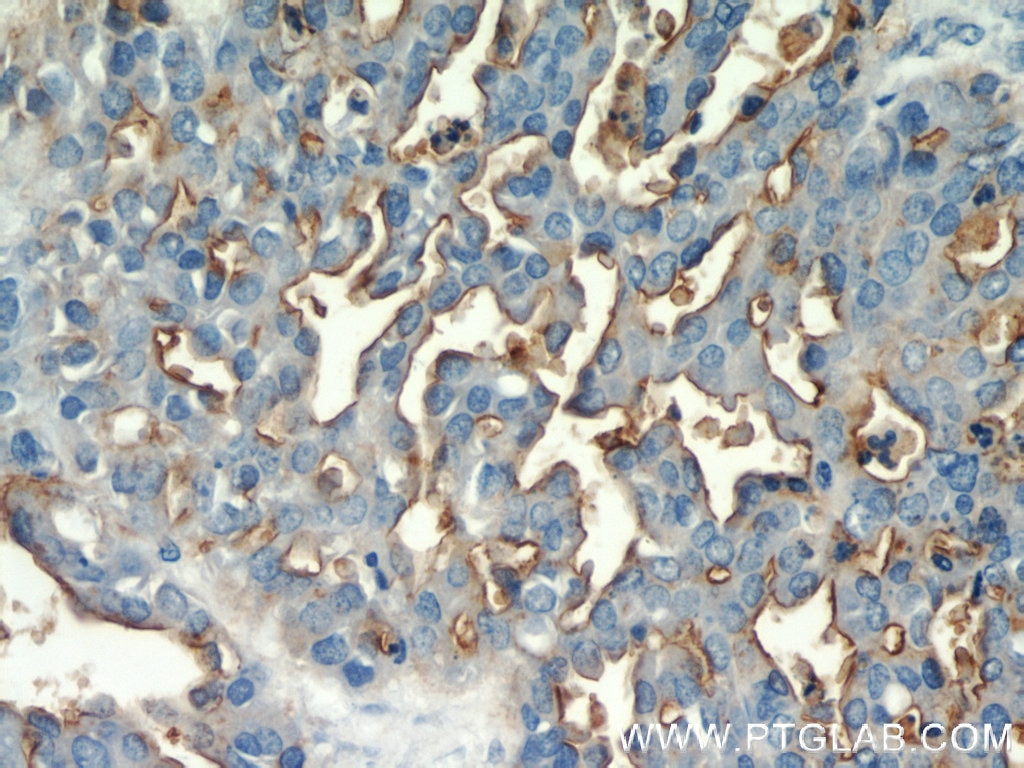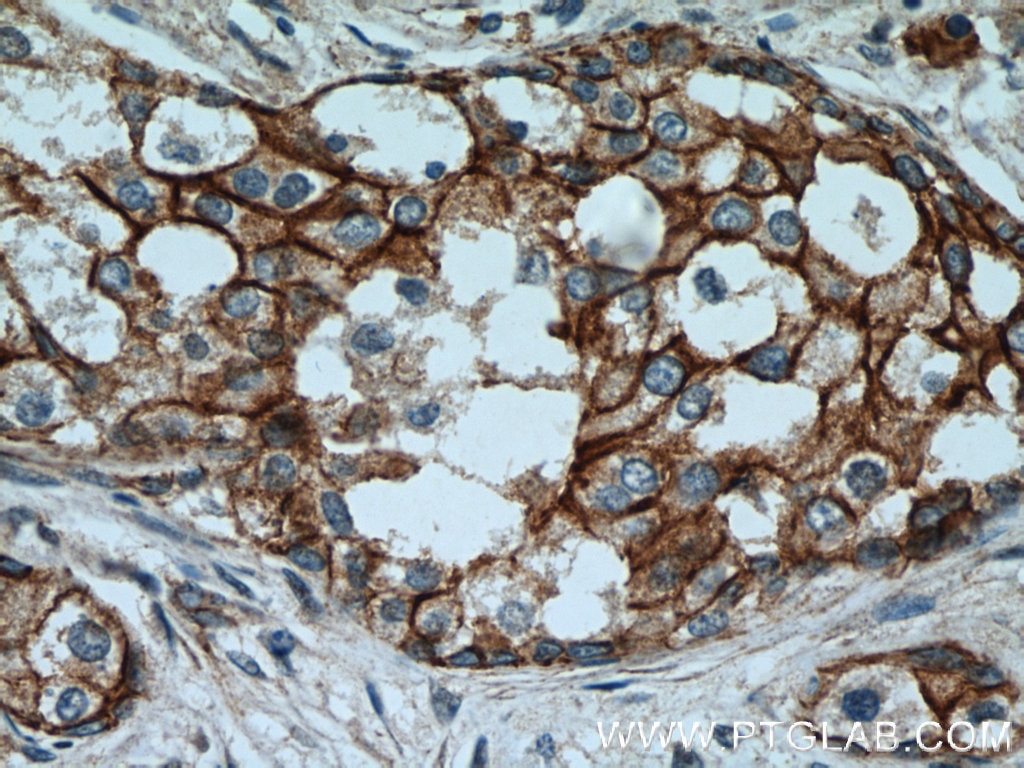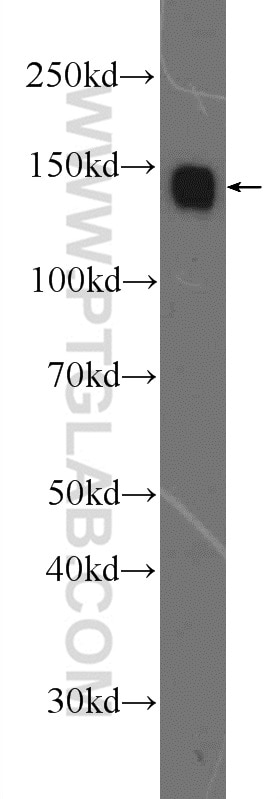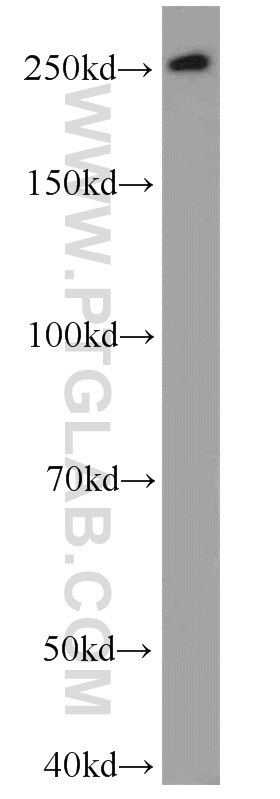- Phare
- Validé par KD/KO
Anticorps Polyclonal de lapin anti-MUC1/CA15-3 N-terminal
MUC1/CA15-3 N-terminal Polyclonal Antibody for ELISA
Hôte / Isotype
Lapin / IgG
Réactivité testée
Humain et plus (2)
Applications
WB, IF, IHC, CoIP, ELISA
Conjugaison
Non conjugué
N° de cat : 19976-1-AP
Synonymes
Galerie de données de validation
Applications testées
Applications publiées
| KD/KO | See 1 publications below |
| WB | See 13 publications below |
| IHC | See 4 publications below |
| IF | See 1 publications below |
| CoIP | See 1 publications below |
Informations sur le produit
19976-1-AP cible MUC1/CA15-3 N-terminal dans les applications de WB, IF, IHC, CoIP, ELISA et montre une réactivité avec des échantillons Humain
| Réactivité | Humain |
| Réactivité citée | canin, Humain, souris |
| Hôte / Isotype | Lapin / IgG |
| Clonalité | Polyclonal |
| Type | Anticorps |
| Immunogène | Peptide |
| Nom complet | mucin 1, cell surface associated |
| Masse moléculaire calculée | 122 kDa |
| Poids moléculaire observé | 122 kDa |
| Numéro d’acquisition GenBank | J05582 |
| Symbole du gène | MUC1/CA15-3 |
| Identification du gène (NCBI) | 4582 |
| Conjugaison | Non conjugué |
| Forme | Liquide |
| Méthode de purification | Purification par affinité contre l'antigène |
| Tampon de stockage | PBS avec azoture de sodium à 0,02 % et glycérol à 50 % pH 7,3 |
| Conditions de stockage | Stocker à -20°C. Stable pendant un an après l'expédition. L'aliquotage n'est pas nécessaire pour le stockage à -20oC Les 20ul contiennent 0,1% de BSA. |
Informations générales
MUC1 is a type I transmembrane glycoprotein expressed by various epithelial cells of female reproductive tract, lung, breast, kidney, stomach, and pancreas. MUC1 is transcribed as a large precursor gene product, and upon translation, is cleaved in the endoplasmic reticulum, yielding two subunits: the large extracellular N-terminal subunit (MUC1-N, about 120-200 kDa) and the small cytoplasmic C-terminal subunit (MUC1-C, about 23-30 kDa). Among the known mucins, MUC1 is best studied and plays crucial roles in regulating many cellular properties, including cell proliferation, apoptosis, adhesion, and invasion. MUC1 is overexpressed in a wide range of human epithelial malignancies. This antibody was raised against the N-terminal region of human MUC1, thus it recognizes the 120 kDa extracellular MUC1.
Publications
| Species | Application | Title |
|---|---|---|
Biosens Bioelectron Aptamer-bivalent-cholesterol-mediated proximity entropy-driven exosomal protein reporter for tumor diagnosis | ||
ACS Appl Mater Interfaces Aptamer-Peptide Conjugates as Targeted Chemosensitizers for Breast Cancer Treatment. | ||
Clin Cancer Res Integrative Genomic Analysis of Gemcitabine Resistance in Pancreatic Cancer by Patient-derived Xenograft Models. | ||
Oncogene Core 3 mucin-type O-glycan restoration in colorectal cancer cells promotes MUC1/p53/miR-200c-dependent epithelial identity.
| ||
Int J Nanomedicine Integration of Dual Targeting and Dual Therapeutic Modules Endows Self-Assembled Nanoparticles with Anti-Tumor Growth and Metastasis Functions. | ||
Cell Cycle LINC02535/miR-30a-5p/GALNT3 axis contributes to lung adenocarcinoma progression via the NF- κ B signaling pathway. |






